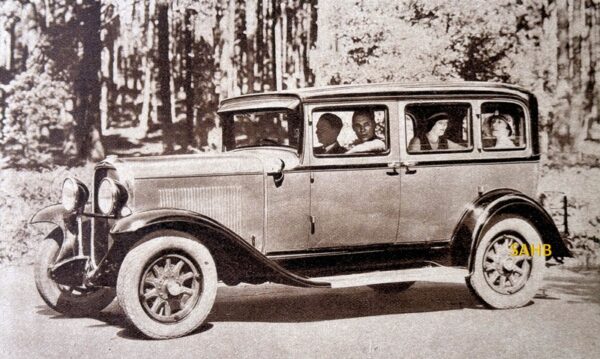
This is quite a rare car – but all things are relative. It is rare for a mass-produced car from General Motors. 35,007 Marquettes were made in the USA in the one-year life of the model. But this car is almost certainly rarer, as will become clear.
The Marquette Six was a 1930 model but, because of the curious traditions of American automobile marketing, it first arrived in US showrooms on 1 June 1929. The car in our Snapshot is right-hand drive – for a good reason. It appeared in a British advertisement in August 1929, priced at £375 for the 4-door saloon seen here. It was also extensively reviewed in the same British publication. Why could it be rarer? Because GM Canada built a further 6,535 Marquettes, and it is very likely that British-market cars came from that country to avoid import duty.
The name Marquette was first used for a car when the Berwick Auto Car Company of Grand Rapids, Michigan, used it on its electric car in 1904. Then quite separately, in 1909, General Motors bought the failing Rainier Motor Company and established a new company, the Marquette Motor Company, in Saginaw, Michigan, to continue production of the luxury Rainier car until 1911. It was possibly renamed Marquette in that year, but only lasted until 1912.
GM revived the Marquette name for the 1930 model year as one of its new junior brands, alongside Viking, La Salle and Pontiac, to span price gaps in its market segmentation plan. Marquette shared Buick’s GM B platform and was placed below Buick but above Viking. Cost savings to achieve the price reduction from Buicks included the use of a straight-six side-valve engine of 212.8 cu. in. (3½ litres) against the overhead valves that were characteristic of Buicks. To maximise sales potential in Britain, GM also offered higher-priced Marquettes with English-built bodies and wire instead of artillery wheels. Nevertheless, the British reviewer did point out certain Americanisms such as central gear change, only three forward speeds and a rather low second gear ratio, implying some unsuitability for British roads. The new car did not last long. Oldsmobile was losing sales to Marquette, and Buick did not feel that enough Marquettes were being sold to warrant the extra cots of yet another brand. There was thus no 1931 Marquette.
There was an interesting postscript. After the shutdown of Marquette, the engine production tools were shipped to Germany, and the engine was used to power the original Opel Blitz, in the first ever link between Opel and Buick.
Image courtesy of The Richard Roberts Archive: www.richardrobertsarchive.org.uk







Leave a Comment